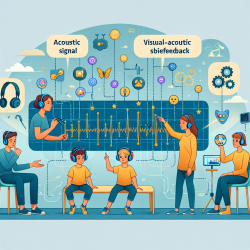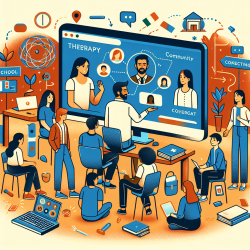Speech-language pathologists (SLPs) are constantly seeking effective methods to address residual speech errors in children. The study "Differential Effects of Visual-Acoustic Biofeedback Intervention for Residual Speech Errors" by McAllister Byun and Campbell provides compelling evidence on the potential of visual-acoustic biofeedback to enhance speech therapy outcomes. This blog explores how practitioners can implement these findings to improve their practice and encourages further research in this promising area.
Understanding Visual-Acoustic Biofeedback
Visual-acoustic biofeedback utilizes real-time visual representations of speech sounds to help children correct their articulation. This method allows children to see their speech patterns and compare them to correct models, facilitating self-correction and learning. The study involved 11 participants who received both biofeedback and traditional therapy, with sessions counterbalanced to measure efficacy.
Key Findings
The study's results indicate that visual-acoustic biofeedback can be particularly effective in the early stages of treatment. Here are some critical takeaways:
- Participants showed significant improvements in speech accuracy during the initial phase of biofeedback treatment.
- Biofeedback was more effective than traditional methods in the first phase, while traditional methods showed greater efficacy in the second phase.
- Four out of eleven participants were strong responders to biofeedback, demonstrating substantial improvements.
Practical Implementation
For SLPs looking to incorporate visual-acoustic biofeedback into their practice, consider the following steps:
- Initial Assessment: Conduct a thorough assessment to identify the specific speech errors and determine the child's baseline performance.
- Early Integration: Introduce biofeedback early in the treatment process to leverage its effectiveness in the initial learning stages.
- Monitor Progress: Use visual-acoustic biofeedback tools to provide real-time feedback and track improvements over time.
- Transition to Traditional Methods: As the child progresses, gradually incorporate traditional therapy methods to enhance generalization and retention of correct speech patterns.
Encouraging Further Research
While the study provides valuable insights, it also highlights the need for more extensive research to optimize biofeedback duration and identify which children are most likely to benefit from this approach. Practitioners are encouraged to participate in or conduct further studies to build on these findings and refine biofeedback interventions.
To read the original research paper, please follow this link: Differential Effects of Visual-Acoustic Biofeedback Intervention for Residual Speech Errors.










